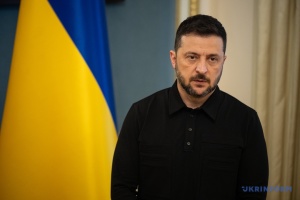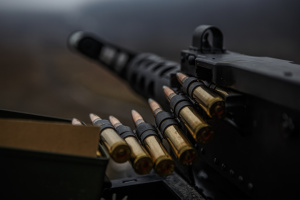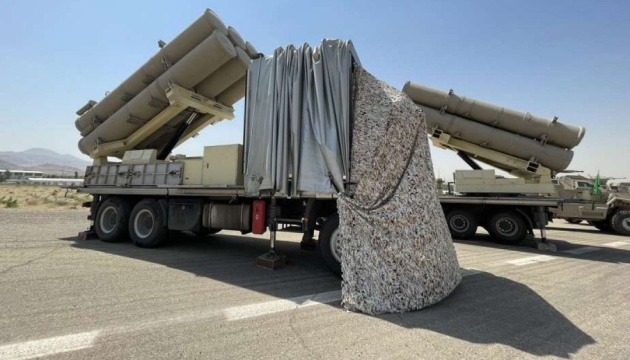
Iran’s Fath-360 missiles: Interceptable, but destroyed launchers would do better
Without going into too much detail, reports in influential Western media outlets, and responses from Ukraine and partners, as well as ambiguous statements made by Iranian officials are all suggesting that Moscow has either received or is about to receive the first batch of two hundred Fath-360 ballistic missiles from Tehran.
Ukrinform has found out what is known of the Fath-360 missile, its cost, how many launchers and missiles the Russian Federation has received, and how we can counter this emerging threat.
Fath-360 missile. What is known of it
The Fath-360 is an Iranian short-range ballistic missile, which effectively is a smaller version of its longer-range sibling Fateh-110. A satellite-guided missile, the Fath-360 can fly at Mach 3 while cruising and speed up to Mach 4 in the terminal phase of the flight. With a length of 5.1 meters and a weight of 787 kg, it is armed with a 150-kilogram high-explosive warhead. Fath-360 missiles have a relatively imprecise hit radius of around 30 meters and can travel as far as 120 kilometers.
"This missile is for short-range attacks. But what is most interesting is that, in terms of specifications and even dimensions, it is more reminiscent of a symbiosis between a rocket-propelled munition and a SAM missile like 5V55. In other words, the Fath-360 is essentially equivalent to the S-300 SAM system, with the difference that it was initially designed for ground-to-ground strikes, unlike the S-300 missile reconfigured from the surface-to-air to surface-to-surface role," says Oleksandr Kovalenko, a columnist at the Information Resistance Group.
Interestingly enough, Moscow did not initially appear interested in the Fath-360. Instead, the Kremlin was seeking its more capable sibling Fateh-110 or the Zolfagar missile. What made Moscow ultimately choose in favor of Fath-360?
"I think the transfer of Fath-360 missiles heralds only the beginning of the missile alliance between Tehran and Moscow. That’s to say, the Fath-360 will be followed up with supplies of longer-range missiles. Most likely, it will be the Fateh-110 – a bigger, farther-flying version of the Fath-360, which some call the Iranian Iskander. The Fateh-110 hosts a half-ton warhead and ranges as far as 300 kilometers," Yigal Levin, an Israeli Defense Forces officer said in a comment to Ukrinform.
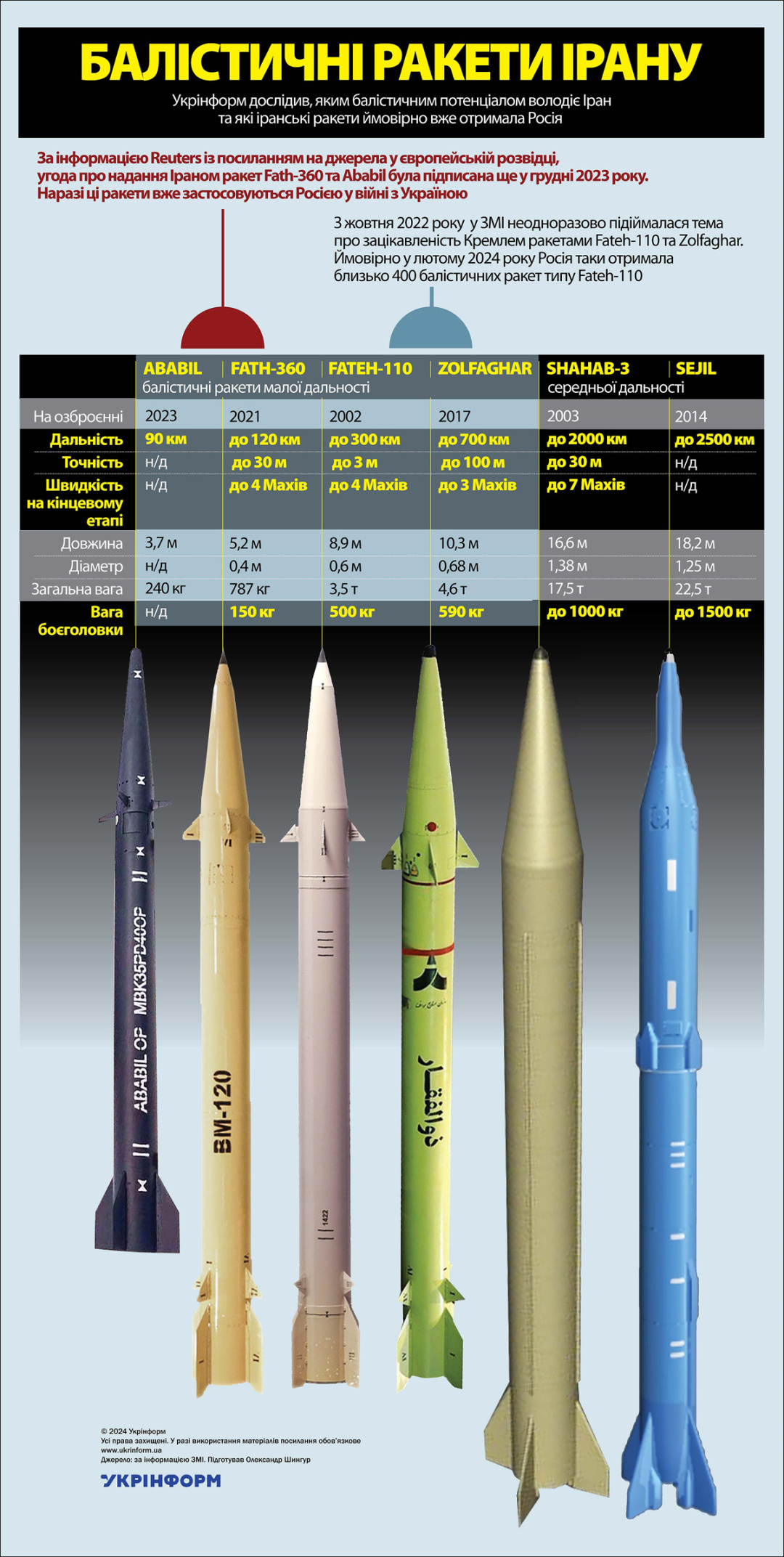
Russia’s choice in favor of the Fath-360 leads to two conclusions, Kovalenko goes on to note. "First is that Iran possesses a wide range of ballistic missiles with longer ranges and way more lethal warheads, but what was transferred to Russia is likely a modification that represents a reduced variant of the S-300, designed exclusively for the terror, not for tackling specific tasks, even of the tactical level. That means to say that Tehran, for some reason or other, is so far reluctant to give the green light for Russia to get an access to Fateh-110, Zolfaghar and Dezful, likely in anticipation of the time when Moscow is ready to give away way more than the missiles are really worth”.
"Second. What precludes Russia from continuing to strike the border areas in Ukraine with surface-to-air missiles like the S-300, as it did before? Instead, Moscow purchases from Tehran a stripped-down variant of this missile. This leads to a cautious conclusion that, as the full-scale war dragged on into its third year, Russia’s stockpile of S-300 missiles has depleted to the point where it has to buy without pinning too much hope on own industries."
How much the Fath-360 missile costs
That information is not accessible at the moment. But renowned aviation analyst Valery Romanenko believes that these are "sixpenny” missiles.
"The price varies between $500,000 to $1 million per missile, depending on the rate of production – the lower the rate the higher the price,” he says.
Whatever the cost, the missiles are not paid in money but bartered for Iranian needs.
"Moscow did not pay with soybeans and wheat (as one Iranian lawmaker claimed - ed.), but with its most advanced Su-35 fighter jets previously refused by Egypt. As you may know, Iranian pilots are already in Russia training on the Yak-130 training aircraft. Afterwards, they will switch to the Su-27 two-seater, and ultimately to the Su-35."
200 missiles... But how many launchers?
"It is not known exactly how many launchers Iran has transferred to Russia. There are reports only about 200 Fath-360 missiles transferred. But these reports cannot be relied upon, as they come from the mass media, and neither Iran, nor the Russian Federation, nor Ukraine, nor Western intelligence did not provide any exact figures. As for the cost, I can't say with confidence, but I think this is low-end weapon. Neither do I know how much of this stuff is there in Iran. Basically, Iran possesses missiles of all kinds in the thousands. Specifically the Fath-360 is a relatively new missile, so I suggest there are a few hundreds of them," says Yigal Levin.
Mykhailo Samus, director of the New Geopolitics Research Network, agrees with the above: "No information is accessible regarding the launchers. So we can only make assumptions. Iran has likely transferred not ten or even five of them, but just two or three launchers mounted on a truck. Each accommodates several launch canisters carrying one missile each."
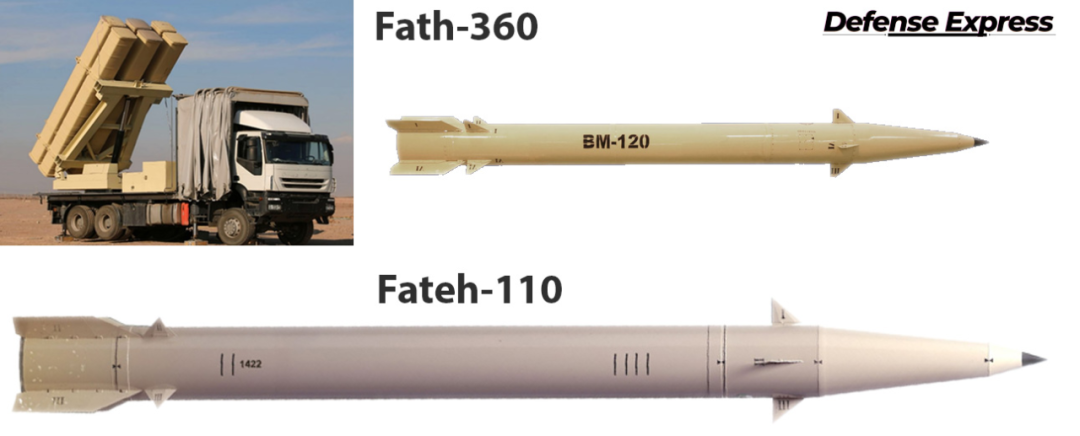
The Kremlin was way more seeking Fateh-110, the longer-range and more lethal sibling of the Fath-360
Valery Romanenko comments: "Fath-360 missiles are carried in packs of six, four or two. One launch canisters hosts one missile. How much launchers is Iran likely to have transferred? I estimate it ‘s one full battery maximum, i.e. two to four launchers overall, capable of firing from 12 to 24 missiles in one single salvo. What are these 200 missiles, or is it a lot or not? Well, it's not a small shipment, but it's not a big one either."
However, more of such missiles can follow up
Mykhailo Samus comments: "The current number of 200 Iranian ballistic missiles transferred to Moscow may grow to 400 tomorrow, and to 1,000 the day after tomorrow. Everything will depend on the amount of financial resources to be invested in this program, as well as on what mechanisms will be created to ensure components deliveries. It should be appreciated that Iran, which is under international sanctions, always begins producing new products in small batches, but... Take Shakhed drones, for example. Just two years earlier, Iran didn’t produce lots of them – just a few dozen per month. When, however, Russia became showing an interest in these explosive drones and began investing huge money in the project and helped Iran in obtaining the requisite components, the rate of production jumped up immediately: first to hundreds per month, then to a thousand per month currently. The same can be with the Fath-360. Iran maybe making them by the dozens currently, but it won’t be long before it will be able to put them out by the hundreds."
These 200 missiles are a try-out batch -- analyst
"This initial batch is needed by Russia to try them out in combat deployments, to see how effective they are, and then, if they prove effective, to order the next, larger batch from Iran. As for the launchers, again, I estimated they have transferred two or three launchers to the Russians. This will suffice at this point," the analyst added.
Potential targets for the missiles
Russia will use Fath-360 missiles in the same way it uses its S-300s, i.e. for terrorizing areas close to the border, in particular, Sumy and Kharkiv regions, including the two regional capitals, Oleksandr Kovalenko believes.
"These missiles are not going to exert any critical impact on Ukraine’s rear regions or the battlefield areas, just as the thousands of the S-300 missiles the Russians have launched at Ukrainian cities over the time of the all-out invasions did not do".
At the same time, Mykhailo Samus believes it probable that the adversary may use these missiles against Ukrainian troops currently deployed in Russia’s Kursk region.
"This will create a situation where the West can say that, since the Iranian-supplied missiles will be used by Russia against targets on its own sovereign territory, they will not be able to blame Moscow for its war of aggression waged on the sovereign territory of Ukraine . Neither will they be able to apportion blame on Iran, saying that even though Tehran did transfer ballistic missiles to Moscow, these are fired at cities and villages in Russia, not in Ukraine. This will relieve part of tension surrounding this transfer, meaning the taboo on Ukraine using Western-supplied long-range munitions against targets in Russia will remain in place. But in actual fact, however, everyone perfectly understands that this does not change anything, because they can fire Fath-360s at Sudzha today, but at Sumy or Kharkiv tomorrow."
The main question: how to counter the Fath-360s?
"Since these are short-range missiles, they are hard to counter. The Israeli Iron Dome, which was created precisely to intercept such threats, copes with this perfectly well. But, unfortunately, this system is not yet available to us," Mykhailo Samus goes on to note.
But what aside the Dome? Hypothetically, the Fath-360 can be intercepted using the Patriot or SAMP-T.
"Why hypothetically? Because no one has shot down Iranian missiles with these munitions yet, so we need to see how it will turn out in practice. Remember how the Patriot worked against the Kinzhal. Until Ukraine received these air defense systems and successfully used them in real-world combat operations, the Patriot was effective on paper only against Russian hypersonic missiles, says the director of the New Geopolitics Research Network.
Valery Romanenko agrees that the SAMP-T and Patriot systems can be used to shot down this ballistic missile, but there is one “however”: "Firstly, we have just few of these air defense systems available to us, and, secondly, we have only a limited number of missiles to fire from them. Our partners transfer these missiles to us in very limited quantities, two or three dozens each, because they are too costly. By way of comparison, one Patriot missile costs $3-4 million, while a Fath-360 missile is worth from $500,000 to $1 million."
For the context: the MIM 104 missile fired from the Patriot air defense system has first-round hit accuracy of 0.8 (1 is 100%), meaning we will need 400 such missiles to shoot down all of those 200. The ratio can be 1:1, indeed, but to ensure 100 percent hit probability, one will need two anti-missiles per one ballistic missile.
"Do we have these 400 Patriot missiles available to us? This question is close to rhetorical," Mr. Romanenko added.
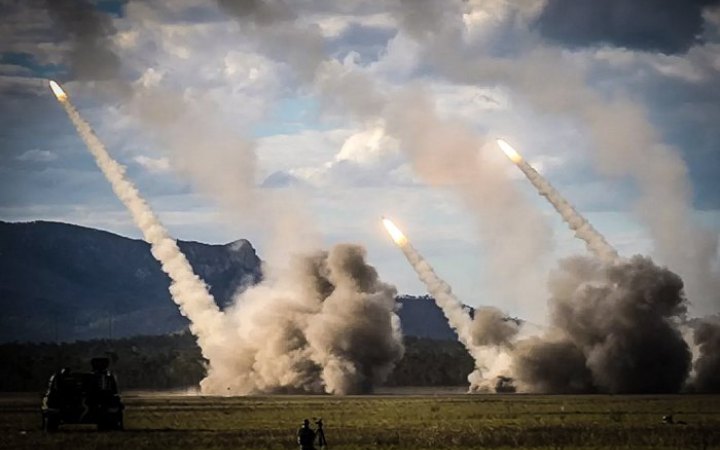
That said, the best option would be to destroy the launchers. We will remind that, overnight on September 7, a Ukrainian drone successfully attacked and struck a military base in the locality of Voronezh – the site that not just stored the KN-23 missiles provided to Russia by North Korea, but launched them at targets on the Ukrainian territory.
"The Pentagon says that the Western missiles capable of ranges of up to 300 km will not help Ukraine. After all, the Russian Federation, they say, has redeployed 90 percent of its warplanes deeper into its territory, and, therefore, strikes with such missiles will have a negligible effect. However, this is not true, to say the least. In Russia, there are around 20 airbases located within the immediate hit zone, hosting tactical-range aircraft like Su-34, Su-25, Su-24, Su-27... Secondly, located within the 300-kilometer radius from the border with Ukraine are hundreds of other potential military targets, such as command-and-control centers, logistics hubs. Regarding the transfer of ballistic missiles by North Korea and Iran to Russia, the launchers of these missiles are just itching to be hit with ATACMS missiles. That is the reason why we are requesting our partners to allow us to use their provided weapons on Russian territory," says Mykhailo Samus.
Valery Romanenko adds to the above comment: "The best response would be to destroy the launchers. Our agents in Russia are working perfectly well, the allies provide satellite and electronic intelligence, which makes us capable of identifying the locations and hitting the targets like launch sites or ammunition depots. Hitting with what weapons? Either with our own – explosive drones, or with Western provided munitions – ATACMS with cluster warheads, Storm Shadow/ScalpAG missiles, or, where the Russians pull up their launchers closer to the border, with 155-mm precision-attack MLRS munitions like the M982 Excalibur."
Incidentally, Ukraine’s Armed Forces chief commander Oleksandr Syrsky, in a recent interview with CNN, detailed in explicit terms which targets the US supplied weapons will hit after the ban is lifted.
"The first targets to hit will be missile complexes (launchers, - ed.), which rain missiles down on populated areas on almost a daily basis, causing numerous casualties among civilians. Such instances occur almost daily. These are not only adults who die, but children as well," Syrsky said.
Can we expect breakthrough decisions to end ban on Ukraine’s use of long-range munitions against targets in Russia? Well, considering that this issue has been quite extensively discussed in the media for several weeks now, in particular in the Western media, it means that, at least, it is on the table, and being discussed. So, there is a cautious optimism that the decision will be ultimately made, and Ukraine will be allowed to hit targets in Russia with Western weapons.
Myroslav Liskovych. Kyiv



